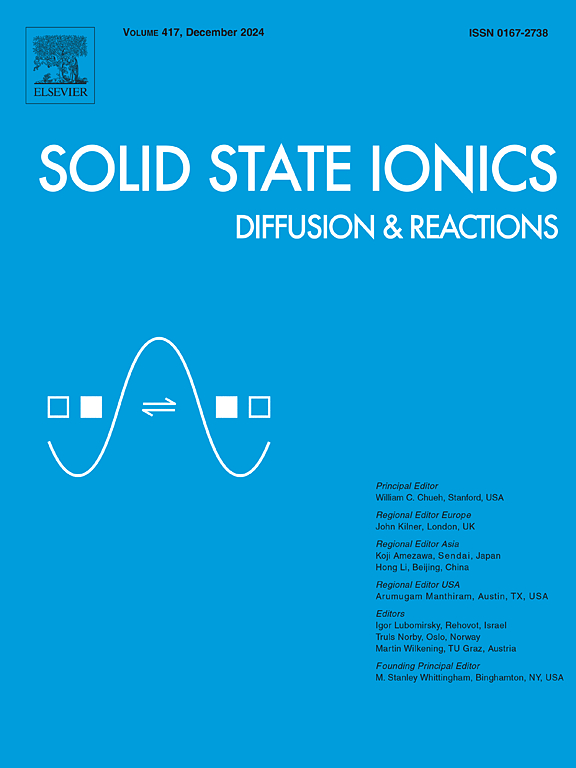掺y锆酸钡中Ni、Fe和Co杂质含量的光学评价
IF 3.3
4区 材料科学
Q3 CHEMISTRY, PHYSICAL
引用次数: 0
摘要
掺y BaZrO3 (BZY)是一种很有前途的质子导电燃料电池(PCFC)电解质材料。镍、钴和铁的杂质浓度在电池加工研究中经常引起人们的兴趣,因为它们的电化学性能和烧结性在很大程度上取决于它们的浓度。这项工作提出了一种简单的技术,通过评估L -色空间中的颜色来量化BZY烧结体中溶解的Fe, Co和Ni。比色测量显示,L -与稀溶液中Fe、Co和Ni浓度的对数之间大致呈线性关系,范围从0.001到0.1 at。%,提供经验校准曲线。L值还取决于用作起始材料的BZY原料粉末和烧结过程,导致烧结体的相对密度、Ba缺乏和过量的变化。因此,当应用于一系列具有相同起始材料和相同工艺的烧结体时,该校准曲线是可靠的。本文章由计算机程序翻译,如有差异,请以英文原文为准。
Optical evaluation of Ni, Fe and Co impurity content in Y-doped barium zirconate
Y-doped BaZrO3 (BZY) is a promising candidate for the electrolyte material of proton conducting fuel cell (PCFC). The impurity concentrations of Ni, Co, and Fe are often of interest in studies of cell processing because the electrochemical performances and the sinterability remarkably depend on the concentrations. This work proposes a simple technique to quantify the dissolved Fe, Co, and Ni in BZY sintered bodies by evaluating the color in the L⁎a⁎b⁎ color space. Colorimetric measurements revealed a roughly linear relationship between L⁎ and the logarithm of Fe, Co, and Ni concentrations in the dilute range from 0.001 to 0.1 at.%, providing an empirical calibration curve. L⁎ values also depend on the raw BZY powders used as the starting material and the sintering procedure, resulting in variations in relative density, Ba deficiency and excess of the sintered body. Therefore, when applied to a series of sintered bodies with consistent starting material and same processes, this calibration curve is reliable.
求助全文
通过发布文献求助,成功后即可免费获取论文全文。
去求助
来源期刊

Solid State Ionics
物理-物理:凝聚态物理
CiteScore
6.10
自引率
3.10%
发文量
152
审稿时长
58 days
期刊介绍:
This interdisciplinary journal is devoted to the physics, chemistry and materials science of diffusion, mass transport, and reactivity of solids. The major part of each issue is devoted to articles on:
(i) physics and chemistry of defects in solids;
(ii) reactions in and on solids, e.g. intercalation, corrosion, oxidation, sintering;
(iii) ion transport measurements, mechanisms and theory;
(iv) solid state electrochemistry;
(v) ionically-electronically mixed conducting solids.
Related technological applications are also included, provided their characteristics are interpreted in terms of the basic solid state properties.
Review papers and relevant symposium proceedings are welcome.
 求助内容:
求助内容: 应助结果提醒方式:
应助结果提醒方式:


